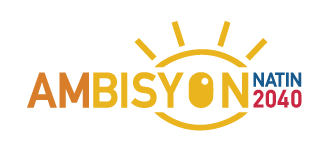Ben O. de Vera (Inquirer.net)
President Rodrigo Duterte has ordered all government agencies to implement the administration’s medium-term development plan and take it into utmost consideration when pitching their annual budgets.
Socioeconomic Planning Secretary Ernesto M. Pernia, who is also chief of the National Economic and Development Authority (NEDA), told reporters Friday that the President signed last Thursday Executive Order (EO) No. 27, mandating the implementation of the Philippine Development Plan (PDP) and the Public Investment Program (PIP) for 2017-2022.
EO 27 directs all government agencies, state-run firms and local government units to “adopt and disseminate the PDP 2017-2022 and undertake efforts leading to its full implementation” as well as “align their budgetary and departmental/corporate programs with the strategies and activities identified” in the plan.
The PDP 2017-2022 targets a 7-8 percent growth in gross domestic product (GDP) in the medium term by pursuing the Duterte administration’s 10-point socioeconomic agenda, which is ultimately aimed at reducing the poverty incidence to 14 percent by 2022 from 21.6 percent in 2015.
As for job creation, PDP 2017-2022 wants to reduce unemployment to as low as 3-5 percent by 2022 from 5.5 percent last year.
PDP 2017-2022 is the first medium-term development plan anchored on the long-term vision dubbed “AmBisyon Natin 2040.”
Launched last year, AmBisyon Natin 2040 aims at tripling the per capita income to $11,000 in 24 years by sustaining an annual GDP growth of at least 6.5-percent along with the implementation of policies that would make the Philippines a high-income country by 2040.
According to a survey conducted early in 2016, a majority Filipinos aspire for a “simple and comfortable life,” which Neda had said reflected a middle-class lifestyle – earning enough, educating all children until college, owning a car, owning a medium-sized house, finding time to relax with family and friends, owning a business, and being able to travel around the country.
Last October, Duterte signed EO 5, which adopted the AmBisyon Natin 2040 as the long-term vision for the Philippines, such that “by 2040, the Philippines shall be a prosperous, predominantly middle-class society where no one is poor.”
Also, EO 27 sought alignment of programs with the PIP 2017-2022, which will contain the priority programs and projects to be implemented by the national government.
“The formulation of the PIP 2017-2022 shall be completed by July 2017 and updated annually and simultaneously with the preparations for the annual national government budget, or as may be determined by Neda,” EO 27 read.
Under EO 27, Neda will monitor compliance with both the PDP and PIP 2017-2022.
“The Neda Secretariat shall work together with various implementing agencies for the prioritization and sequencing of identified strategies, policies, programs and projects, including proposed legislation. The monitoring of outcomes and implementation shall be reported regularly to the appropriate Neda Board Committees, existing Cabinet Clusters, and Inter-Agency Committees of the government,” EO 27 said.
“All heads of departments, offices and instrumentalities of the national government, including GOCCs [government-owned and/or -controlled corporations], are hereby directed to submit to the Neda Board, through the Neda Secretariat, the agency performance/accomplishment reports with respect to the outcomes and outputs identified in the PDP and PIP,” EO 27 added.
“The creation of the PDP means that we are now ready to transform the AmBisyon Natin 2040 into concrete steps towards making the vision a reality,” Pernia said. “By 2022, the end of this administration’s term, we want inclusive growth, a high-trust society, and a globally competitive knowledge economy.”
